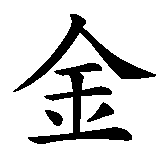contemporary art in graz |
| Friday, April 8th, 2011, 15:30 to 23 hrs |
Works by Franz Kline und Markus Prachensky show forceful movement as well as well-grounded short-term solidity. Lines in a plane, colours and undercoat make up a construct that - in all explosive modesty of its chosen means - suggests a close relationship with Japanese writing, not unlike Lore Heuermann ´s unmistakeable work. - Agnes Ch. Katschner employs the principle of repetition, of insisting on using language, the "language of pictures".
Franz Kline: When I look out the window--I ´ve always lived in the city--I don ´t see trees in bloom or mountain laurel. What I do see--or rather, not what I see but the feelings aroused in me by that looking--is what I paint.--Franz Kline, 1956 After his first one-man show in 1950, which consisted of energetic abstractions such as this one, Franz Kline was immediately dubbed "the black-and-white artist." During the course of the decade, he continued to explore the powerful and emotional effect of assertive brush strokes rendered in simple black and white. Today he is considered one of the most important of the New York-based Abstract Expressionist artists. Interestingly, it was Kline ´s habit to name his paintings after they were finished; this image probably got its title because of its chance resemblance to a chair. He said, "If something happens to look like something tangible, this doesn ´t bother me--but I myself don ´t use real objects as models. . . . I don ´t think there is any reason to say no to the figure or to the object, but it so happens that I haven ´t been working with definite figures or objects."
|




